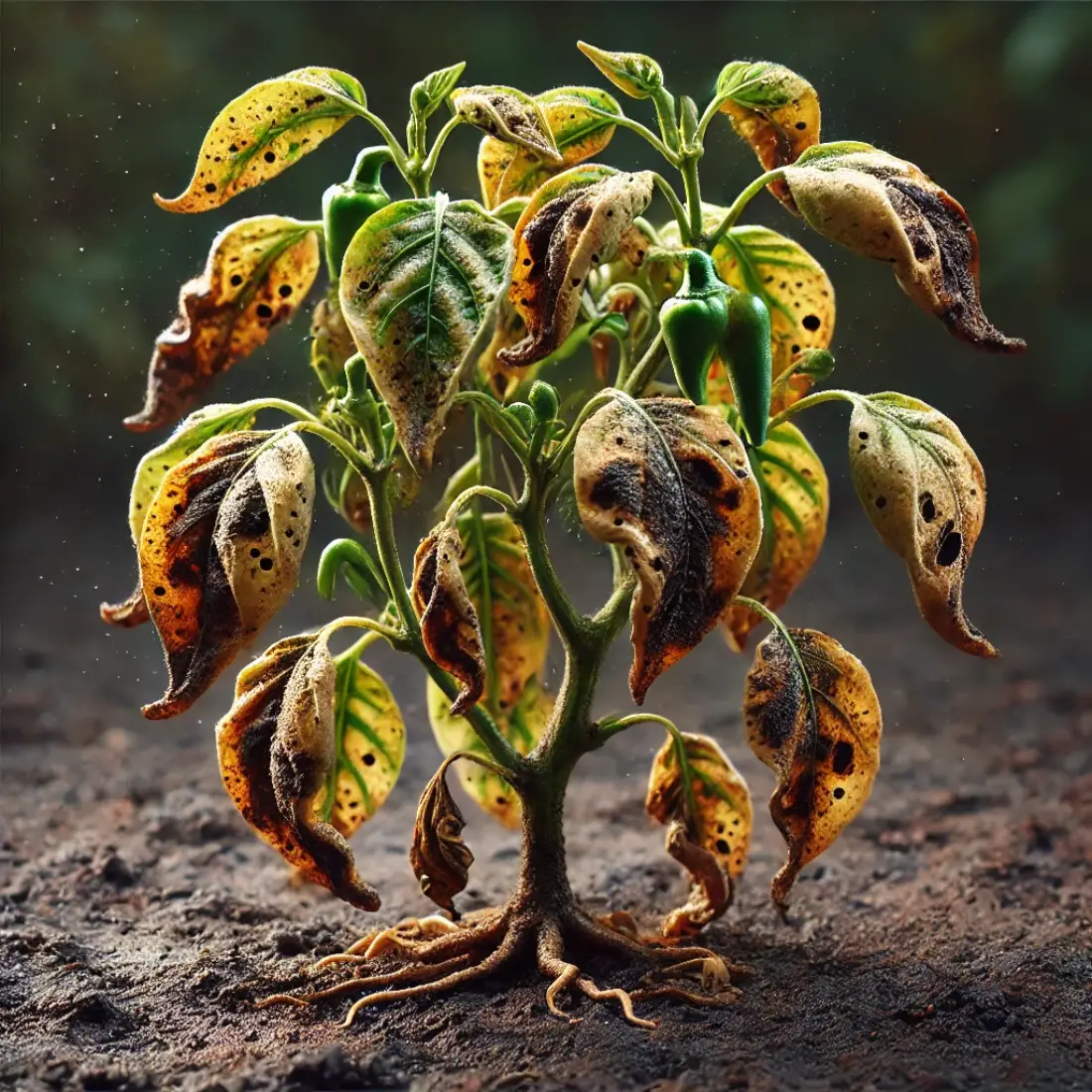Pepper plants, whether grown in gardens or containers, are susceptible to a variety of issues that can hinder their growth and productivity. From diseases like bacterial leaf spot and phytophthora blight to pests such as aphids and spider mites, these problems can quickly spread and cause significant damage if not addressed promptly.
Identifying the symptoms early is crucial for maintaining the health of your pepper plants and ensuring a bountiful harvest. While chemical solutions are available, organic methods are preferred by many gardeners due to their environmental benefits and safety for both plants and people.
- Early detection of diseases and pests is crucial for protecting your pepper plants.
- Organic methods are effective and safe alternatives to chemical treatments, promoting healthier plants and soil.
- A combination of preventative measures, such as crop rotation and companion planting, can help minimize the risk of pepper plant problems.
- Regular monitoring and prompt intervention can prevent minor issues from becoming major threats.
- Encouraging beneficial insects and using organic sprays can help manage pests naturally.
Pepper Plant Diseases
Pepper plants are vulnerable to a range of diseases that can severely impact their health and productivity. Understanding the common diseases and how to manage them organically is essential for maintaining a thriving garden.
1. Bacterial Leaf Spot

Bacterial leaf spot is one of the most common diseases affecting pepper plants. It manifests as small, water-soaked spots on the leaves that gradually turn brown or black. These spots may also develop a yellow halo. If left untreated, the disease can cause significant leaf drop, reducing the plant’s ability to photosynthesize and produce fruit.
- Causes: The disease is caused by the Xanthomonas bacteria, which thrive in warm, humid conditions. It spreads easily through splashing water, contaminated tools, or infected seeds.
- Organic Control Methods: To manage bacterial leaf spot organically, start by removing and destroying any infected leaves to prevent the disease from spreading. Apply copper-based fungicides as a preventive measure, as they are effective at controlling bacterial diseases. Additionally, ensure proper spacing between plants to improve air circulation and reduce humidity around the leaves. Always water at the base of the plant to avoid wetting the foliage.
2. Phytophthora Blight
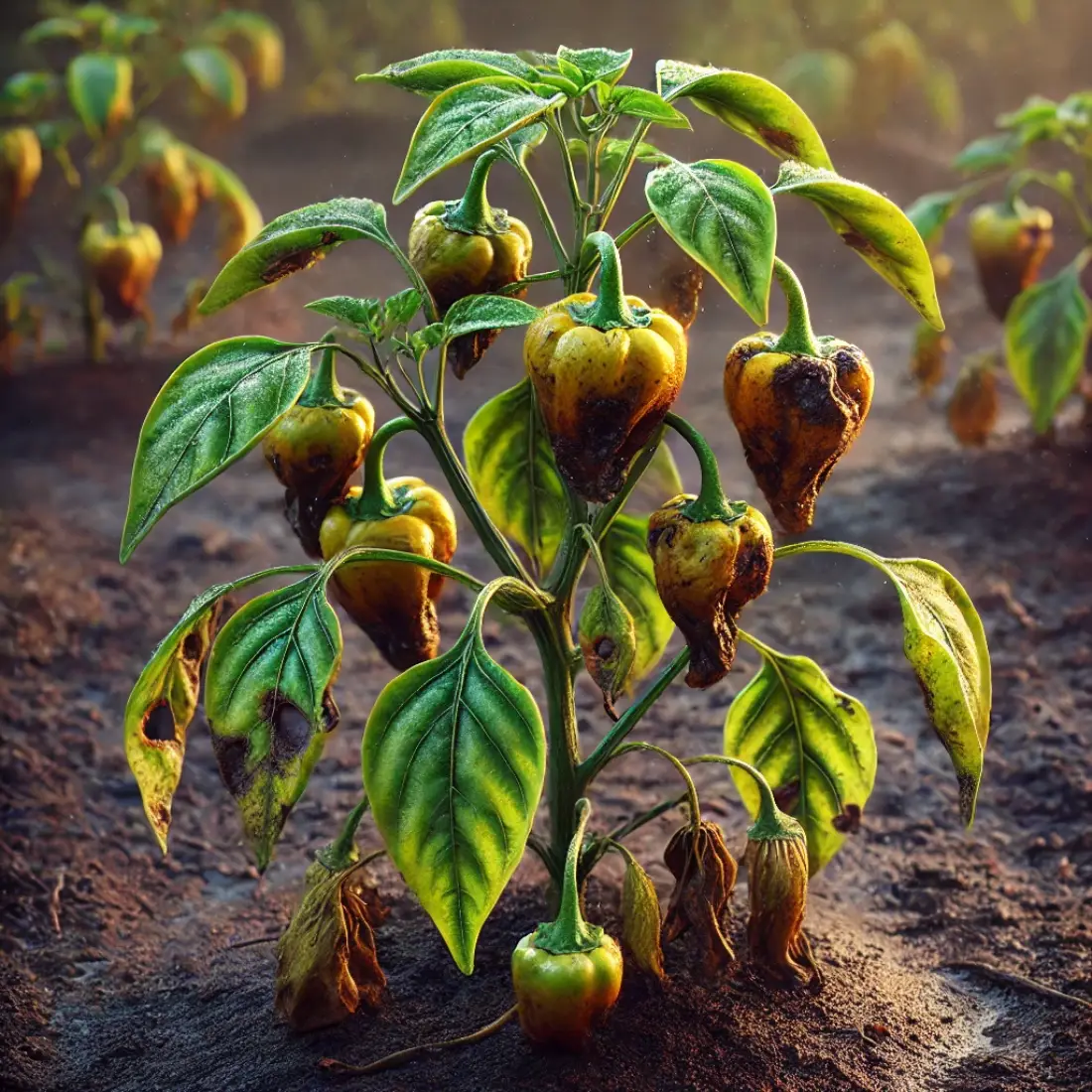
Phytophthora blight is a devastating soil-borne disease that can cause wilting, root rot, and stem lesions. The disease is most destructive in poorly drained soils, where water can pool around the plant’s roots.
- Causes: This disease is caused by the Phytophthora capsici fungus, which thrives in waterlogged soils and spreads through contaminated soil, water, and plant debris.
- Organic Control Methods: To control phytophthora blight, improve soil drainage by planting in raised beds or adding organic matter to the soil to enhance its structure. Mulching around the base of the plants can help keep the soil moisture level consistent. Use resistant varieties of pepper plants when available, and consider applying compost tea to boost the plant’s immune response.
3. Verticillium Wilt
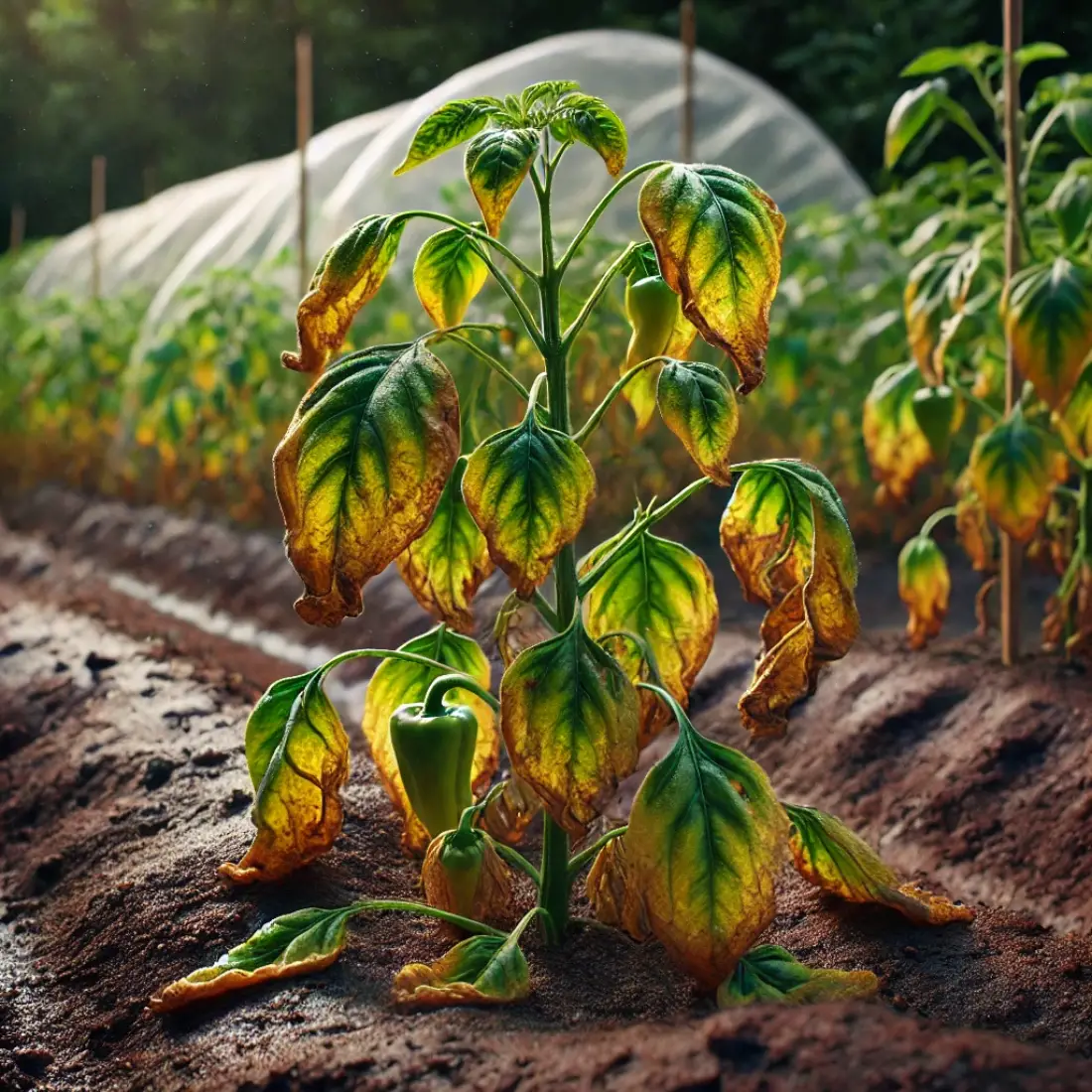
Verticillium wilt is another serious soil-borne disease that causes yellowing and wilting of the lower leaves, often leading to stunted growth and reduced yields.
- Causes: The disease is caused by the Verticillium fungus, which lives in the soil and infects plants through their roots.
- Organic Control Methods: Combat verticillium wilt by practicing crop rotation and avoiding planting peppers in the same spot for consecutive years. Incorporate organic matter into the soil to encourage beneficial microbes that can outcompete the fungus. Soil solarization, which involves covering the soil with clear plastic to trap heat from the sun, can also reduce the presence of this pathogen.
Pepper Plant Pests
Pepper plants can attract a variety of pests that pose significant threats to their health and productivity. Effective pest management, especially through organic methods, is crucial for keeping your pepper plants thriving throughout the growing season.
1. Aphids
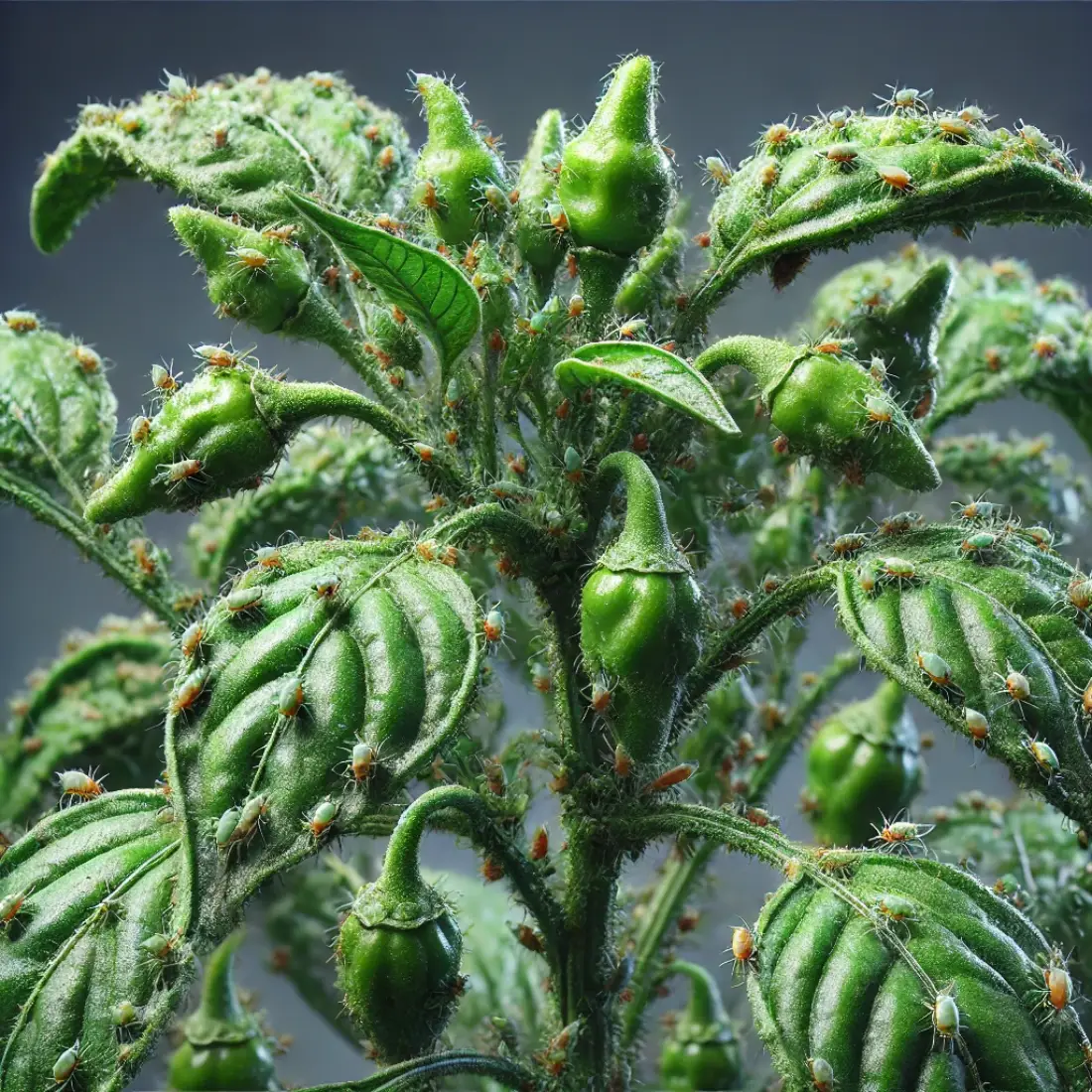
Aphids are small, sap-sucking insects that can cause serious damage to pepper plants. They often cluster on the undersides of leaves and new growth, sucking out plant juices and leaving behind a sticky residue called honeydew. This honeydew can attract ants and promote the growth of sooty mold, further damaging the plant.
- Symptoms: Infestations result in curled, distorted leaves, stunted growth, and yellowing. A severe aphid problem can lead to reduced fruit production and overall plant vigor.
- Organic Control Methods: Introduce ladybugs or lacewings to your garden, as these beneficial insects prey on aphids. You can also spray the affected plants with insecticidal soap or a strong blast of water to physically remove the aphids. Planting companion plants like marigolds or nasturtiums can help deter aphids from your pepper plants.
2. Spider Mites
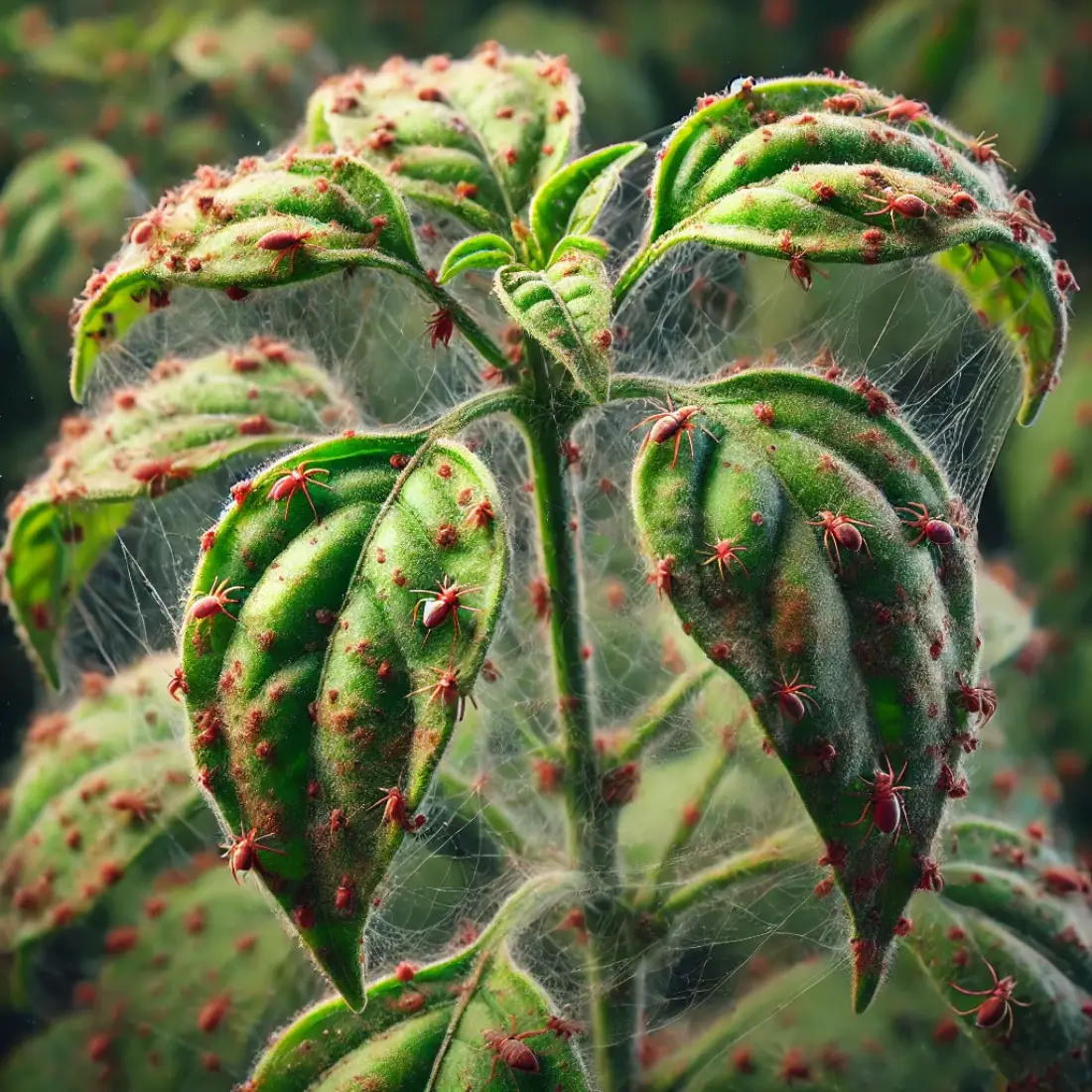
Spider mites are tiny arachnids that thrive in hot, dry conditions. They are notorious for damaging pepper plants by sucking sap from the leaves, leading to speckled yellowing and, in severe cases, leaf drop. Spider mites often go unnoticed until the infestation is well established, making them a challenging pest to manage.
- Symptoms: Look for fine webbing on the undersides of leaves, yellowing, and a dusty appearance on the foliage. Severe infestations can cause leaves to dry out and fall off, weakening the plant.
- Organic Control Methods: Increase humidity around the plants by misting them regularly, as spider mites prefer dry environments. Apply neem oil or insecticidal soap to affected plants. Additionally, introduce predatory mites into the garden, which naturally feed on spider mites.
3. Pepper Weevils
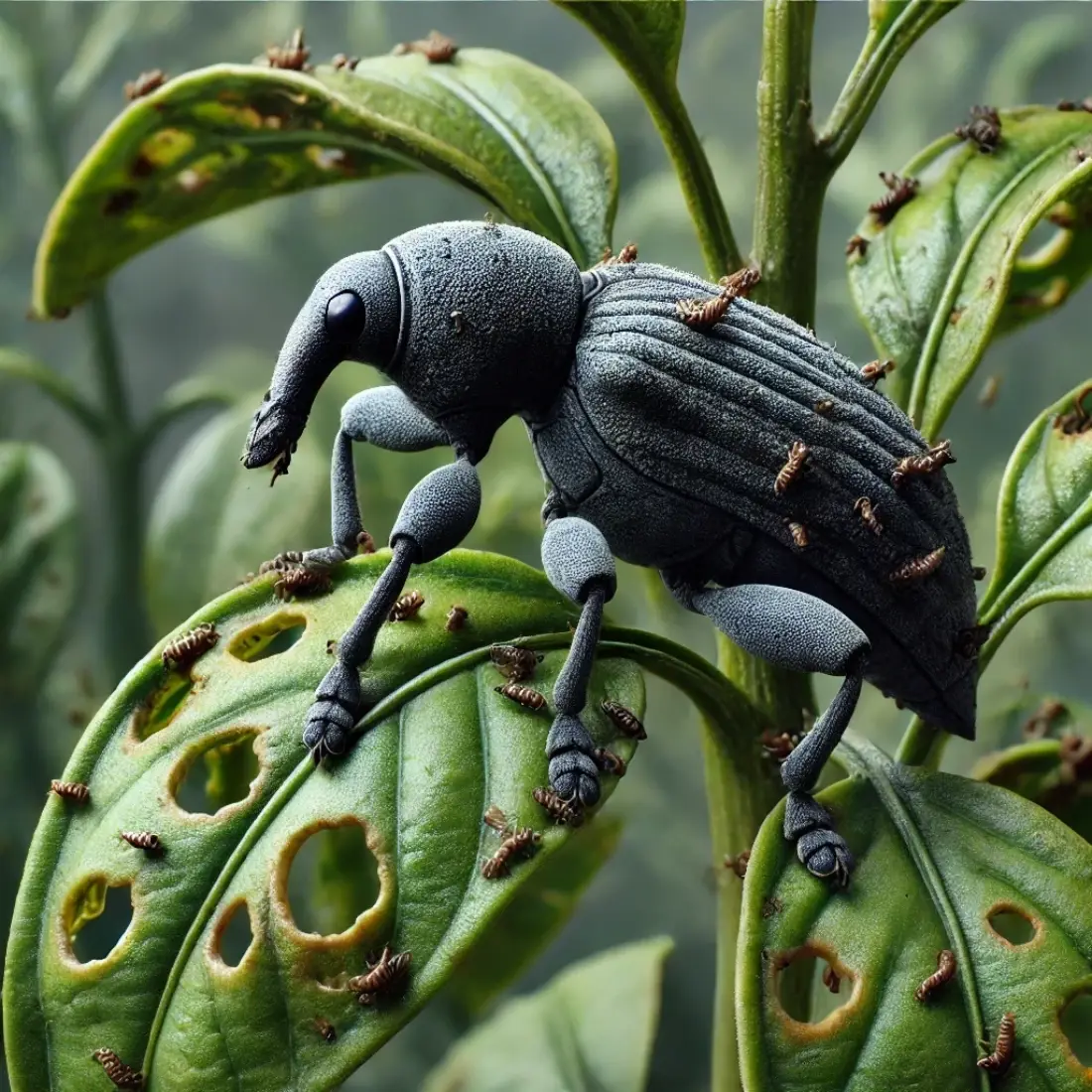
Pepper weevils are small beetles that lay their eggs inside pepper pods. The larvae feed on the interior of the fruit, causing the peppers to become misshapen and often leading to premature fruit drop.
- Symptoms: Look for small holes in the pepper fruit and early fruit drop. Infested fruits may also become soft and rot.
- Organic Control Methods: Remove and destroy any affected fruits to reduce the weevil population. Use sticky traps around your plants to capture adult weevils before they can lay eggs. Sprays made from kaolin clay can also deter weevils from laying eggs on your peppers.
4. Cutworms
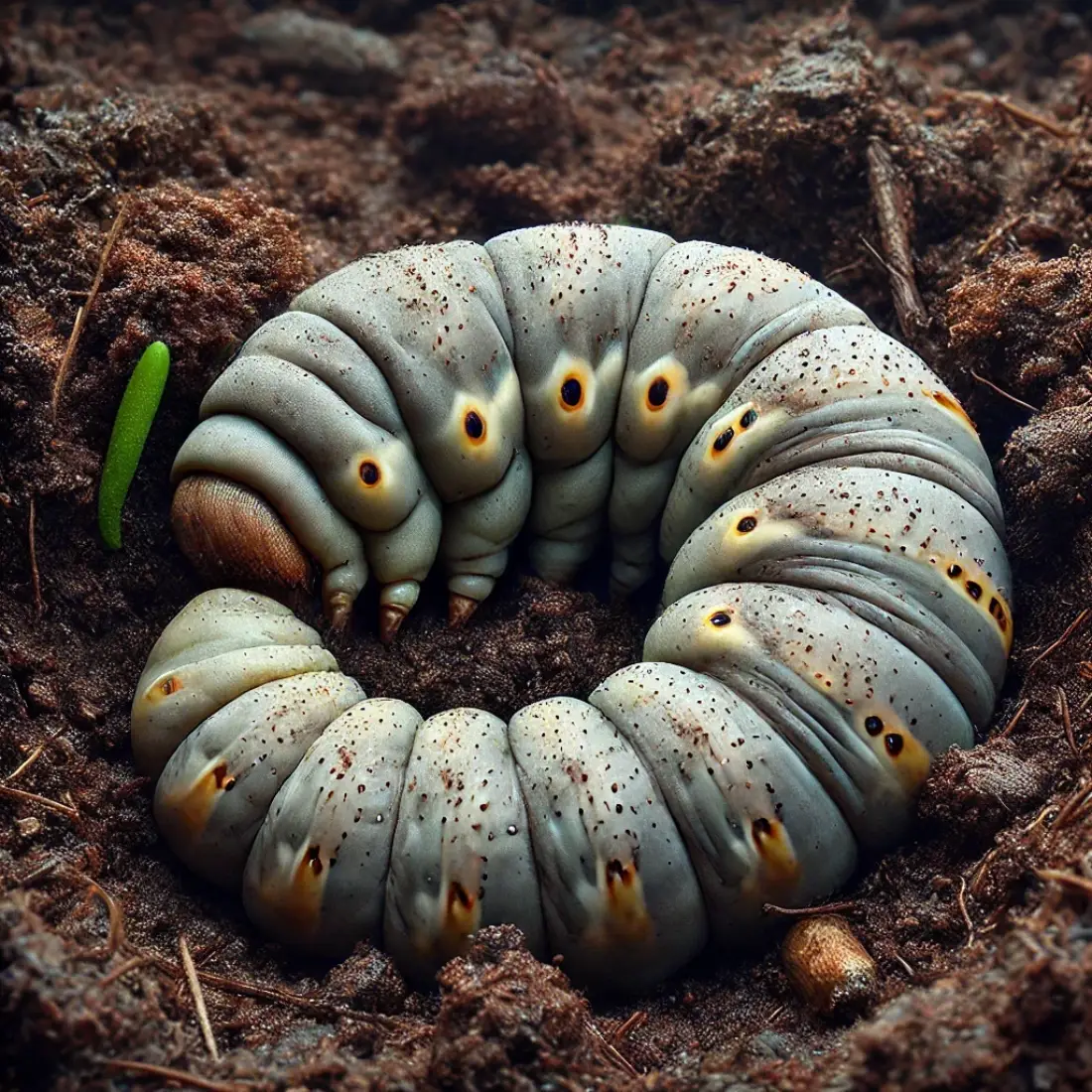
Cutworms are larvae of certain moth species that feed on the stems of young pepper plants, often cutting them off at the soil line. This damage typically occurs at night, making it difficult to spot the culprits.
- Symptoms: The most obvious sign of cutworm damage is the sudden wilting and death of seedlings, with the stem severed at ground level.
- Organic Control Methods: Protect seedlings by placing collars made from cardboard or plastic around the base of the plants. Apply beneficial nematodes to the soil, which will prey on cutworm larvae. Hand-pick any larvae you find during evening or early morning inspections.
Preventative Measures and General Organic Practices
Preventing problems before they start is the best approach to maintaining healthy pepper plants. By implementing a few key organic practices, you can minimize the risk of diseases and pests, ensuring a productive growing season.
Soil Health and Preparation
Healthy soil is the foundation of robust pepper plants. Start by enriching your soil with organic matter, such as compost or well-rotted manure, which improves soil structure, drainage, and fertility. Healthy soil supports strong root systems, making plants more resilient to diseases and pests. Testing your soil’s pH and nutrient levels can also help you make any necessary adjustments to create the optimal growing environment.
Crop Rotation and Companion Planting
Crop rotation is an essential practice to prevent the buildup of soil-borne diseases and pests. Avoid planting peppers (or other members of the nightshade family) in the same spot year after year. Instead, rotate with crops from different families, such as legumes or leafy greens.
Companion planting is another effective strategy. Plants like basil, marigold, and nasturtium not only help deter pests but also enhance the growth of peppers. Marigolds, for example, can repel nematodes, while basil can improve pepper flavor and repel aphids.
Organic Sprays and Solutions
Using organic sprays is an effective way to manage pests and diseases without harming beneficial insects or the environment. Homemade solutions like garlic or chili sprays can deter pests, while neem oil is effective against a wide range of insects and fungi. Regular application of these sprays can help prevent issues from taking hold.
Encouraging Beneficial Insects
Beneficial insects, such as ladybugs, lacewings, and predatory mites, play a crucial role in natural pest control. To attract these helpful creatures, plant a variety of flowering plants that provide nectar and pollen. Avoid broad-spectrum pesticides that can harm these beneficial insects and disrupt the natural balance in your garden.
FAQs about Common Pepper Plant Problems
What are the first signs of disease in pepper plants?
Early signs of disease in pepper plants include yellowing leaves, spots, wilting, and stunted growth. Identifying these symptoms early can help you take quick action to prevent the spread of disease.
How can I organically prevent pests on my pepper plants?
You can prevent pests organically by using companion planting, encouraging beneficial insects like ladybugs, and applying organic sprays such as neem oil or insecticidal soap. Regular monitoring of your plants is also essential.
Are there pepper varieties that are resistant to common diseases?
Yes, some pepper varieties are bred to be resistant to diseases like bacterial leaf spot, verticillium wilt, and phytophthora blight. Choosing resistant varieties can help reduce the risk of these diseases affecting your plants.
How do I improve soil health for pepper plants?
Improve soil health by adding organic matter such as compost or well-rotted manure. This enhances soil structure, drainage, and nutrient availability, which supports healthy pepper plant growth.
What should I do if I find aphids on my pepper plants?
If you find aphids, you can remove them by spraying your plants with a strong stream of water, applying insecticidal soap, or introducing natural predators like ladybugs to control the aphid population.
How can I control fungal diseases on my pepper plants organically?
Control fungal diseases by ensuring good air circulation, watering at the base of the plants to keep foliage dry, and applying organic fungicides like copper-based sprays or neem oil.
Can crop rotation help prevent pepper plant diseases?
Yes, crop rotation helps prevent the buildup of soil-borne diseases. Avoid planting peppers or other nightshades in the same spot for consecutive years to reduce disease risk.
What is the best way to handle cutworms in my garden?
To handle cutworms, place collars around seedlings to protect them, apply beneficial nematodes to the soil, and manually remove any larvae you find during nighttime inspections.
How do I attract beneficial insects to my pepper plants?
Attract beneficial insects by planting a variety of flowering plants that provide nectar and pollen. Avoid using broad-spectrum pesticides that could harm these helpful insects.
How can I manage water-related diseases like phytophthora blight?
Manage water-related diseases by improving soil drainage, using raised beds, and avoiding overwatering. Mulching can help maintain consistent soil moisture without waterlogging the roots.

